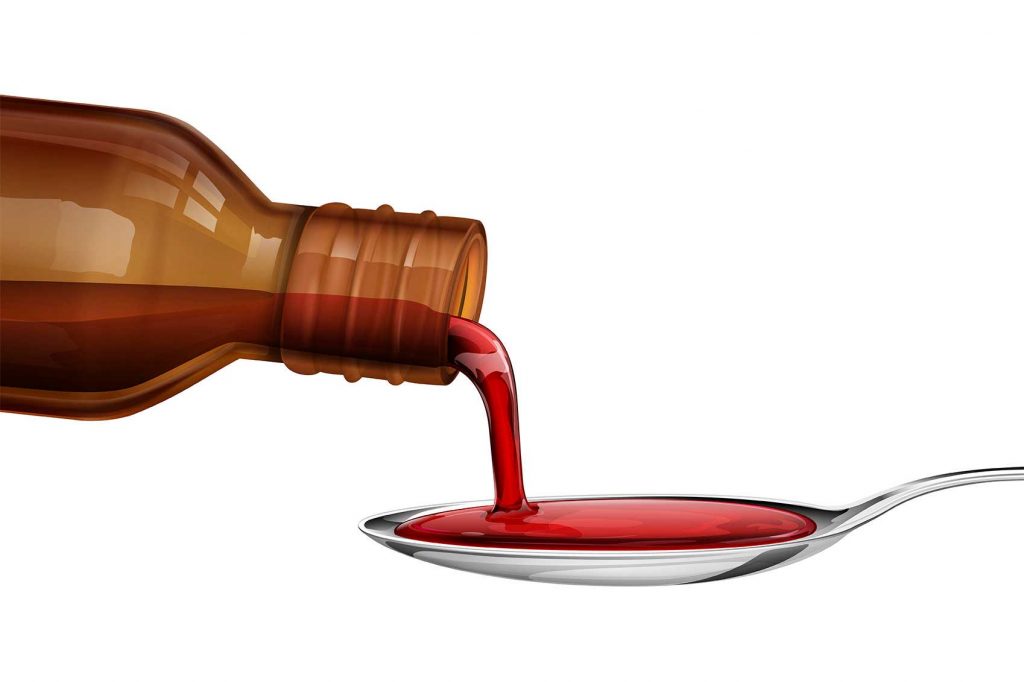Suspensions are biphasic, a heterogeneous system in which finely divided insoluble solid particles (disperse phase) is dispersed or suspended in a vehicle (dispersion medium).
- The diameter of disperse phase may range from 0.5 µm to 100 µm.
- Systems in which particle size is below this range are called colloidal (1 nm-0.5 um diameter).
- Suspensions can be used as an oral dosage form, applied topically to the skin or given parenterally.

Properties of Good Suspensions:
Table of Contents
1. The dispersed particles should settle slowly and should redisperse immediately on shaking.
2. The product should remain sufficiently homogeneous for at least the period between shaking the container and removing the required dose.
3. The viscosity of suspensions should be such that they can be easily removed from the container and transferred to the site of application without any difficulty.
4. The sediment produced on standing should not form a hard cake.
5. It particles should be small and uniformly sized to give a smooth, elegant product free from grittiness.
6. It should be physically and chemically stable during handling and storage conditions.
7. It should have good frangibility in the case of parenteral suspension.
8. It should produce thixotropic property, gel to sol upon shaking and sol to gel on storage.
Advantages:
1. Insoluble drugs may be made more palatable (masking bitter taste). For example, Chloramphenicol.
2. Insoluble drugs can be prepared more stably. For example, Procaine penicillin G.
3. It result in more bioavailability compared to any other dosage form.
Solution > Suspension > Capsule > Compressed tablet > Coated tablet.
4. Duration and onset of action can be controlled. For example, Protamine Zinc-insulin injection.
5. Lotion leaves a cooling layer of medicament on the skin.
6. It can be prepared for both immediate and sustained drug release preparations.
Disadvantages:
1. It require shaking before use, to ensure uniformity of dose
2 If the suspensions is not shaken well, the accuracy of the dose gets affected.
3. Improper storage conditions can affect the disperse system.
4. Sufficient care must be taken during handling and transport.
Classification:
1. Based on general classes:
Oral Suspensions:
e.g. Paracetamol suspension
Antacid suspension
Antibiotic suspension
Anthelmintics suspension
Laxative suspension
Topical suspensions – (Externally applied)
E.g.- Calamine lotion.
Parenteral suspension
e.g. Cholera vaccine, insulin, Zinc suspension.
2. Based on the proportion of solid:
Dilute suspension – (2 to 10% w/v solid)
E.g. Cortisone acetate, Prednisolone acetate.
Concentrated suspension – (50% w/v)
Eg. Zinc oxide suspension.
3. Based on deteriorate nature of solid particles
1. Flocculated
2. Deflocculated
| Flocculated suspension | Deflocculated suspension |
| 1. Particles exist as loose aggregates. | 1. Particles exist as a separate entities. |
| 2. Rate of sedimentation is high. | 2. Rate of sedimentation is low. |
| 3. Sediment formed rapidly. | 3. Sediment formed slowly. |
| 4. Consist of loosely packed particles possessing a Scaffolding structure a hard dense cake does not form and the sedimentation can easily be redispersed. | 4. Sediment becomes very closely packed as the repulsive forces between the particles are overcome a hard cake is formed which is difficult to redisperse. |
| 5. Elegant preparation is obtained due to the uniform distribution of loosely bonded flocs. | 5. Unsightly preparation results due to the formation of sedimentation. |
4. Based on the size of solid particles
1 Colloidal suspension – (< 1 micron)
2. Coarse suspension (>1 micron)
3. Nano suspension (10 ng less than 1 mm)
Applications of Suspensions:
1. It is usually applicable for a drug that is insoluble or poorly soluble
e.g. Prednisolone syrup.
2. To prevent degradation of drug or to remove stability of drug e.g. Oxytetracycline suspension.
3. To mask the bitter drug. e.g. Chloramphenicol palmitate.
4. Topical application e.g. Calamine lotion is used.
5. Parenteral applications for control rate of drug absorption e.g. Penicillin procaine.
6. Vaccine as immunizing agent e.g. Cholera vaccines.
7. X-Ray contrast agent e.g. Barium Sulphate for examining alimentary canal.
Make sure you also check our other amazing Article on : Evaluation of Emulsion